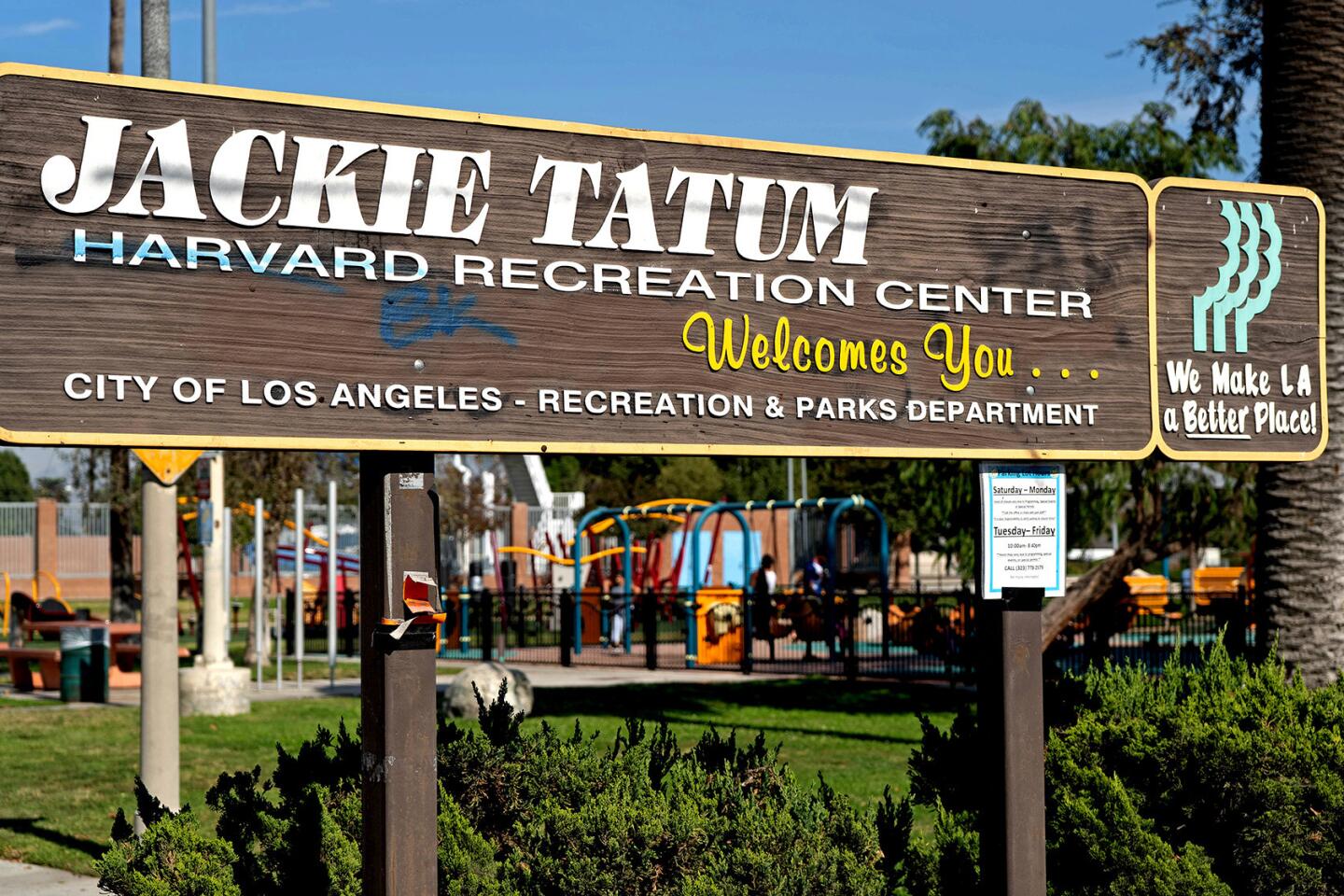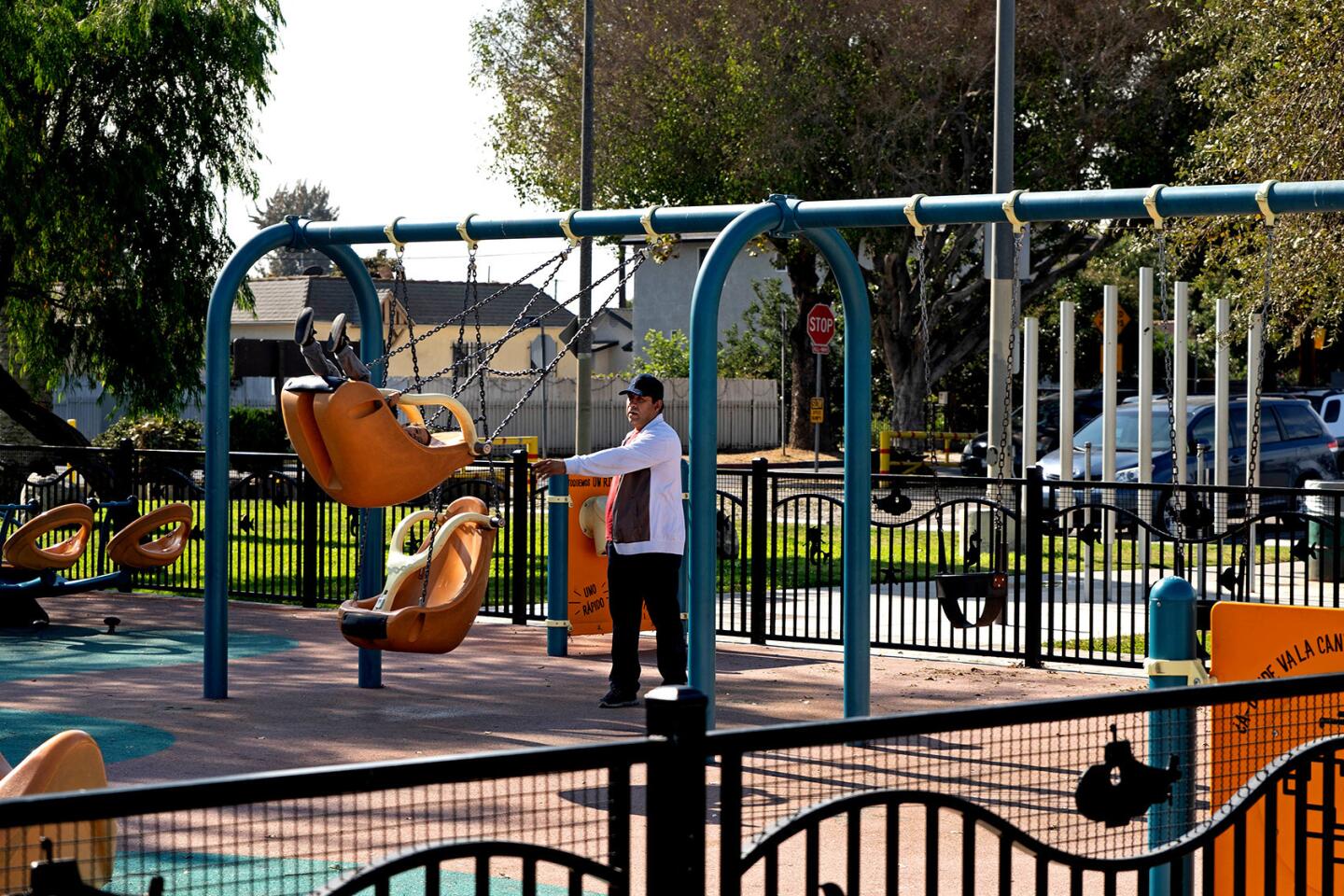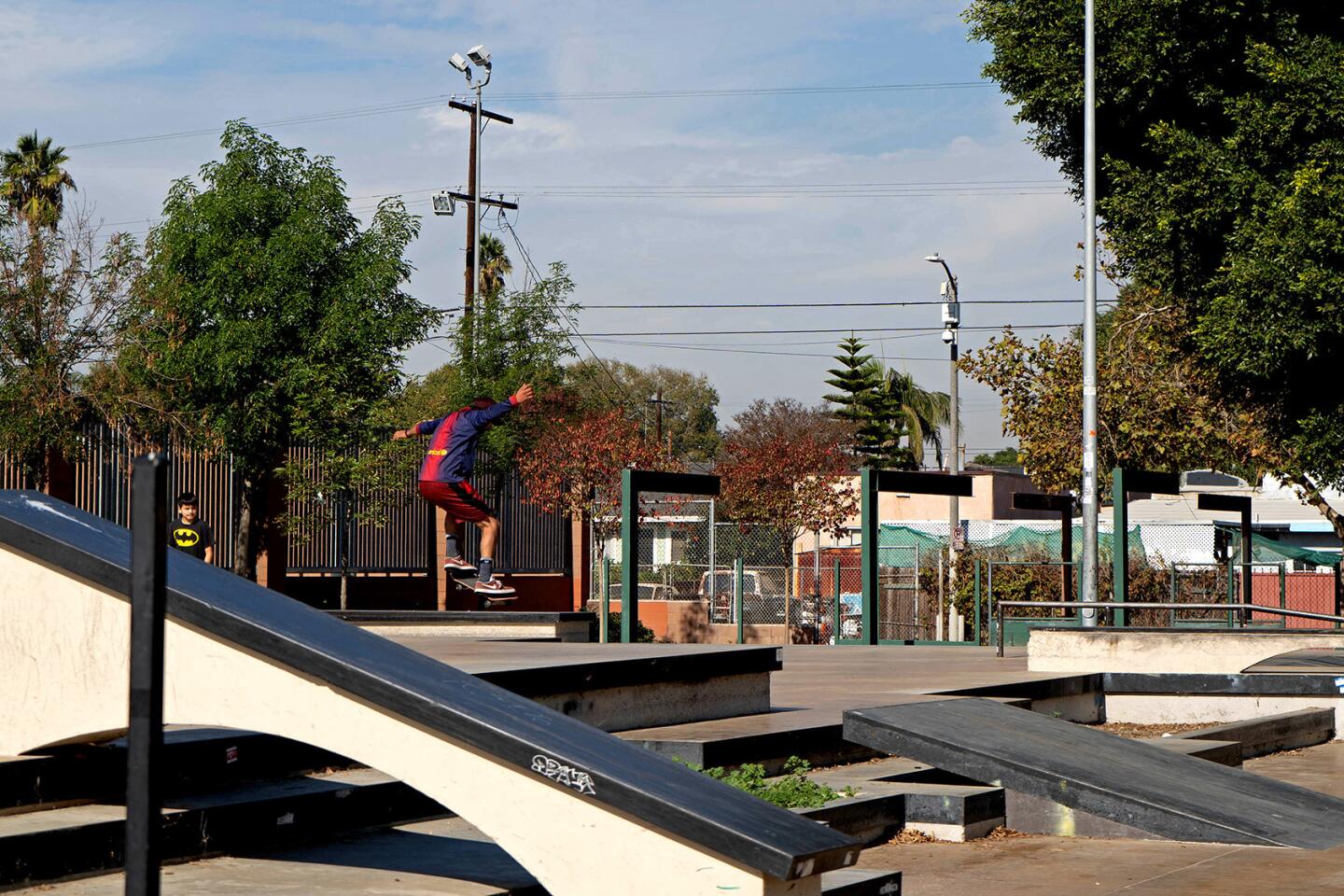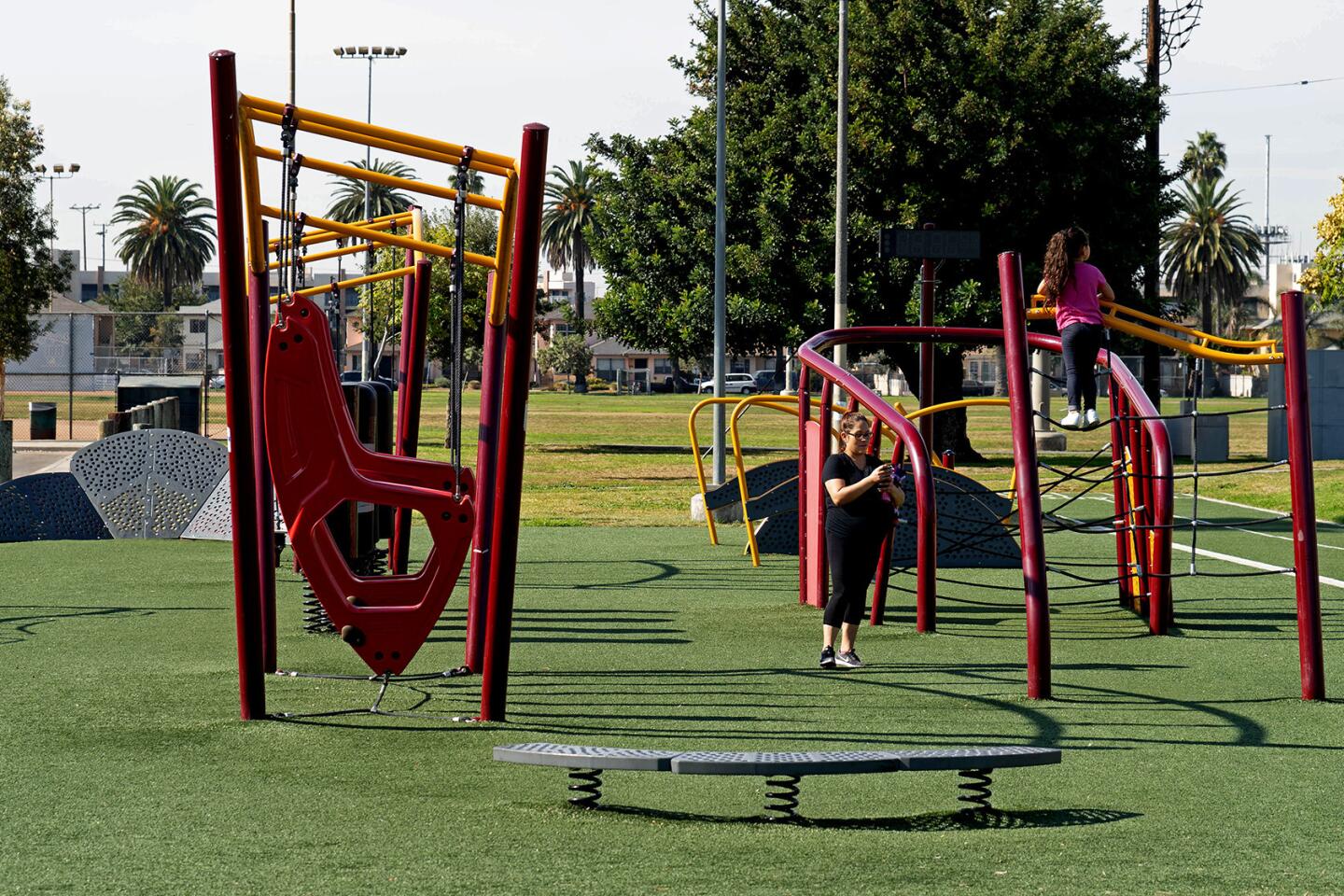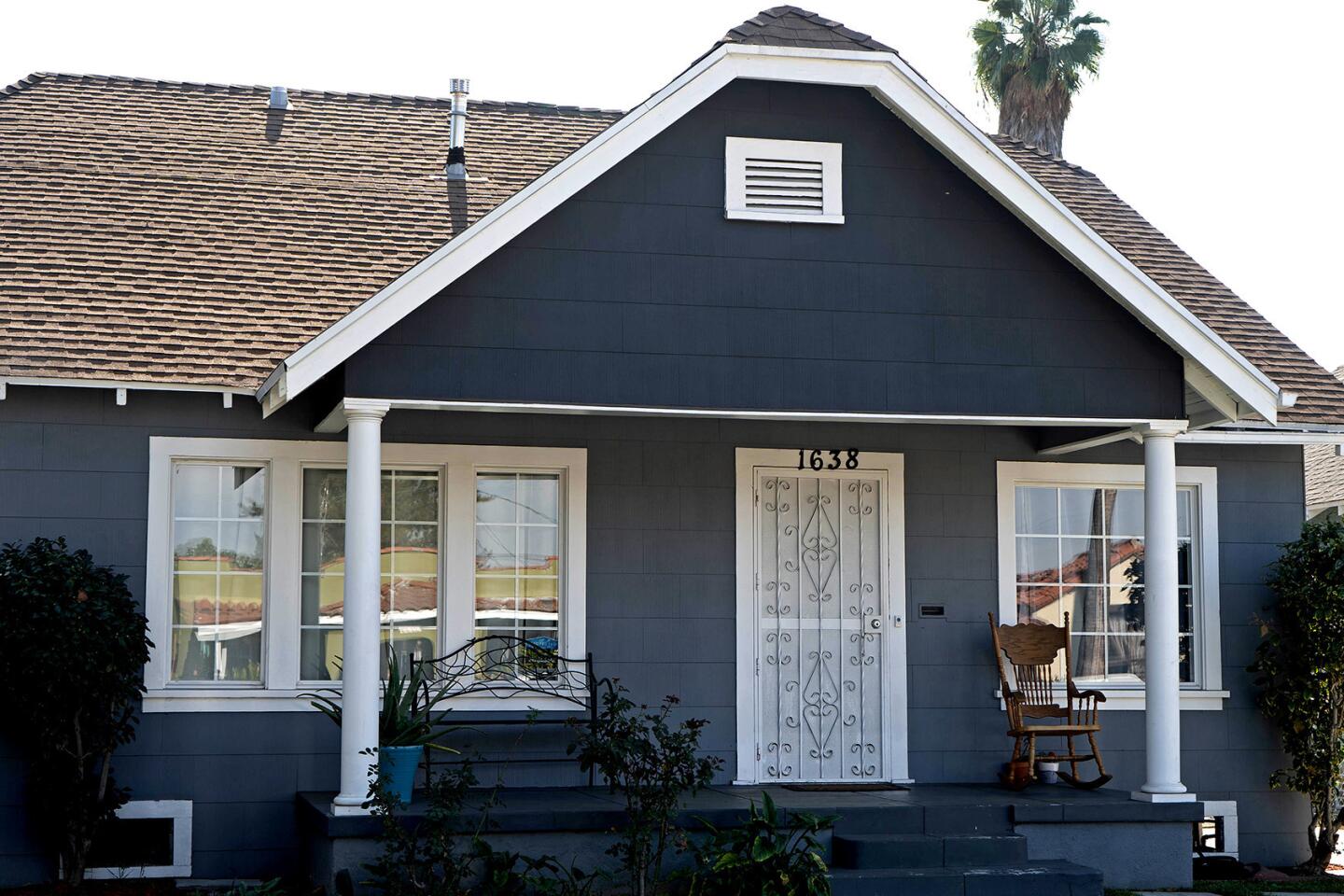Neighborhood Spotlight: Harvard Park’s diverse present grew from 1920s suburbanization
- Share via
Harvard Park, a small, dense neighborhood with an eponymous recreation space at its heart, has its roots in the second wave of suburbanization that swept the city during the population boom of the 1920s.
In contrast to the late 1800s and early 1900s, when L.A.’s suburbs had primarily been developed as idyllic oases for the well-heeled, later developers built street after street of tidy Craftsman bungalows, priced to sell to the city’s large and growing industrial workforce.
Much of South Los Angeles, which had previously been a semi-rural expanse of gently rolling plains, was transformed almost overnight into an enormous working-class suburb.
The familiar grid of boulevards and avenues appeared, upon which rode a great circulating fleet of trolleys — the Los Angeles Railway Yellow Cars — that carried workaday Angelenos to their factory, refinery and warehouse jobs, and home again.
In the northwest corner of the neighborhood, a small industrial district sprang up along the tracks of the Harbor Subdivision rail line, which ferried goods to and from the twin ports of San Pedro and Long Beach, connecting Harvard Park directly to the national rail network.
For decades, a plentiful supply of nearby blue-collar jobs ensured that the neighborhood remained economically vibrant. In the years following World War II, L.A.’s industrial base peaked and then began a decline that would devastate its working-class neighborhoods, many of which had become home to a thriving African American middle class.
As one factory closed after another, the residents of Harvard Park found themselves marooned in an economic desert and left to fend for themselves in a post-industrial landscape marked by high unemployment, poverty and crime.
These untenable conditions would contribute to decades of intermittent social unrest, including the 1992 L.A. riots, which began in the southeast corner of Harvard Park, at the intersection of Florence and Normandie avenues.
Today, Harvard Park still struggles with widespread unemployment and lack of economic opportunity, and the resulting high crime rate.
In recent years, Los Angeles has provided upgrades to the park, including a skate park and playground, and three years ago City Councilman Marqueece Harris-Dawson launched an annual neighborhood job fair in an effort to bring employment opportunities to Harvard Park residents.
Neighborhood highlights
Harvard Park: The park that gave the neighborhood its name was a launching ground for baseball stars Darryl Strawberry and Eric Davis, and a fresh set of upgrades has ensured it will remain central to residents’ lives.
Affordable home prices: Asking prices for Harvard Park’s cozy Craftsman bungalows often dip below $400,000, making it a great place for bargain hunters.
Neighborhood challenges
Public safety: Although the number of homicides in Harvard Park is down year over year, the neighborhood consistently ranks among the most violent in the city.
Expert insight
During his time selling homes in Harvard Park, Jaime Lopez said the neighborhood’s demographics have remained consistent: families and young people.
“They’re attracted to the number of homes available for less than half a million, and many people stay here for a long time,” Lopez said.
He added that Harvard Park’s rows and rows of 1920s homes make for a dense neighborhood, but the park itself, along with a smattering of Mexican restaurants and burger joints, offers room to spread out.
“If you’re willing to get cozy, you can find a home here for under $350,000,” Lopez said. “But if you’re looking for a little more space, $600,000 can get you 2,000 square feet.”
Market snapshot
In the 90047 ZIP Code, based on 15 sales, the median sales price for single-family homes in September was $435,000, up 1.8% year over year, according to CoreLogic.
Report card
Public schools around Harvard Park include Seventy-Fourth Street Elementary, which scored 847 on the 2013 Academic Performance Index, and Western Avenue Elementary, which scored 764.
Budlong Avenue Elementary School and John Muir Middle School are also in the area. They scored 724 and 687, respectively.
Times staff writer Jack Flemming contributed to this report.
More to Read
Sign up for Essential California
The most important California stories and recommendations in your inbox every morning.
You may occasionally receive promotional content from the Los Angeles Times.
